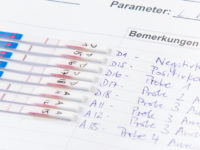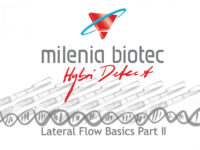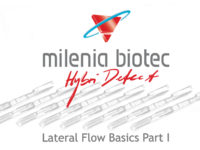The combination of isothermal DNA-Amplification & Lateral Flow fills a relevant diagnsotic gap between extremely sensitive and specific lab-based methods, such as q(RT)-PCR & semi-sensitive, -specific point-of-need testing. It allows field-applicable analysis with a perfomance, that is comparable to existing lab-based moleucular biological applications – This could be a significant contibution for the reliabel & rapid detection of viral outbreaks in aquacultures.

Detecting Viruses in Aquaculture – A Short Method Description
LAMP – Loop-mediated isothermal amplification
LAMP is an isothermal DNA amplification method and thus can be done without using a thermocycler. LAMP based amplification procedures are usually done in the temperature range between 60°C and 65°C. In general, 4-6 primers are used to identify 6-8 regions on the target sequence. LAMP uses DNA Polymerases with strong strand displacement activity.
RPA – Recombinase Polymerase Amplification
RPA is an isothermal DNA amplification method that works at lower temperatures between 37°C and 42°C. RPA uses beside the DNA-Pol. a recombinase, a single-stranded DNA-binding protein (SSB). The recombinase pairs the primers to the homologue target DNA sequences. SSB protein stabilizes the resulting DNA structure. DNA synthesis is initiated by the DNA polymerase.
A universal Lateral Flow Development Platform – Milenia HybriDetect
The Milenia HybriDetect is a lateral flow development platform (LFD), which allows the detection of different analytes, such as amplicons, proteins or antibodies. A frequently used application is the combination of DNA amplification methods, like PCR, LAMP or RPA and Lateral Flow. Therefore, labeled components have to be introduced into the amplification reaction in order to provide visualization on the lateral flow dipstick. Results can be reported within 2- 10 minutes. Milenia HybriDetect is working with aqueous solution and does not contain toxic reagents such as EthBr. Until now 2 different lateral flow devices (LFD’s) belong to the Milenia HybriDetect family – the Milenia HybriDetect (1 Test Line & 1 Control Line) and the Milenia HybriDetect 2T (2 Test Lines & 1 Control Line). If you are interested in more detailled information about Nucleic Acid Lateral Flow Assays, please see the following links.
Learn more about the universal Lateral Flow Device, Milenia HybriDetect.
Learn more about Lateral Flow-compatible nucleic acid amplification techniques.
Detection of Pathogenic Viruses in Aquaculture – Applications
Infectious spleen and kidney necrosis virus (ISKNV)
Ding et. al. developed a LAMP combined with the Milenia HybdriDetect 2T Lateral Flow Dipstick (LFD) for the detection of ISKNV (Infectious spleen and kidney necrosis virus), one of the most important pathogens in aquaculture, especially in China. The ISKNV causes high mortality in many freshwater and marine fish. The authors developed a test with a detection limit of 10 copies for the large cytoplasmic dsDNA virus. The method is rapid, sensitive, simple and has a high economic impact. The sensitivity was 1.000 fold higher than in comparable methods, like LAMP-AGE.
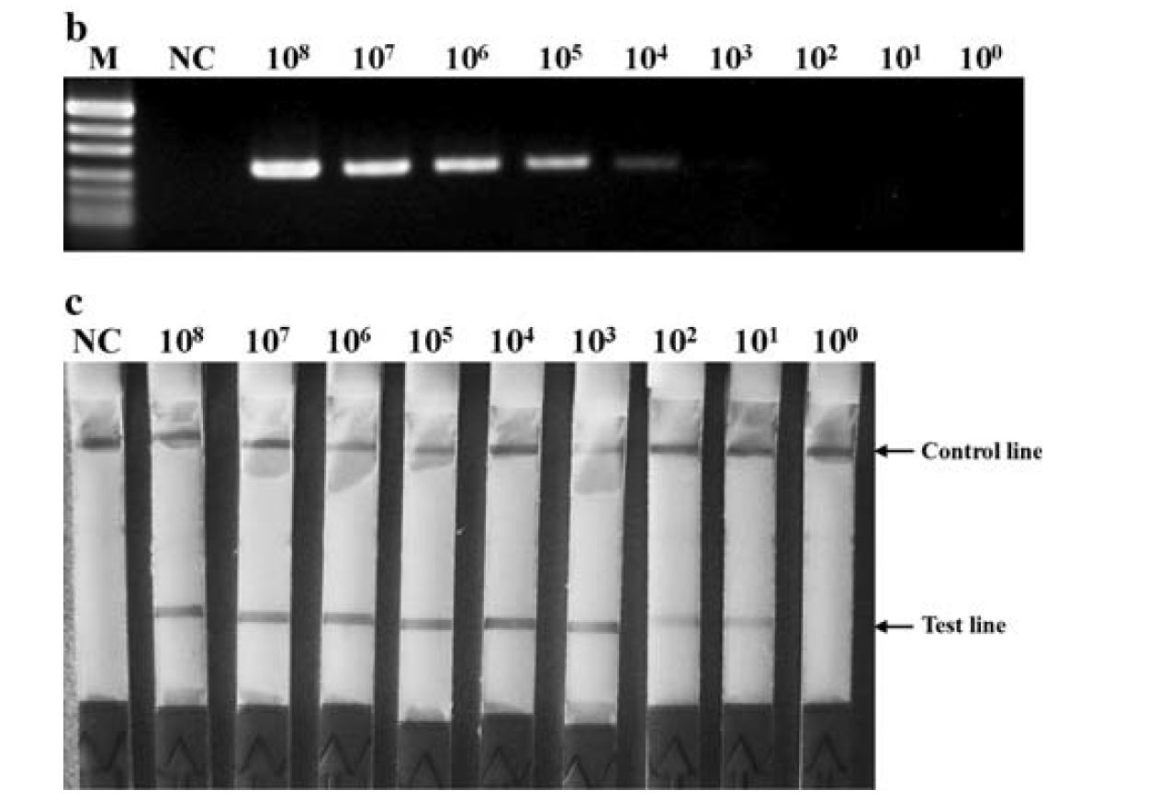
Cyprinid Herpes Virus 2 (CyHV-2)
CyHV-2 causes Herpesviral heamoatopoietic necrosis (HVHN) in carp aquaculture and is responsible for huge economic losses in China, USA and Australia. There is no effective prevention and the disease causes mortality up to 100 %. It is crucial, that HVHN is detected in a very early stage of the disease. Wang et al developed a RPA combined with our HybriDetect which can be done in just 15 minutes at 38 °C. The method is 100 times more sensitive than others and the authors couldn’t detect any cross reactions with other aquatic viruses.
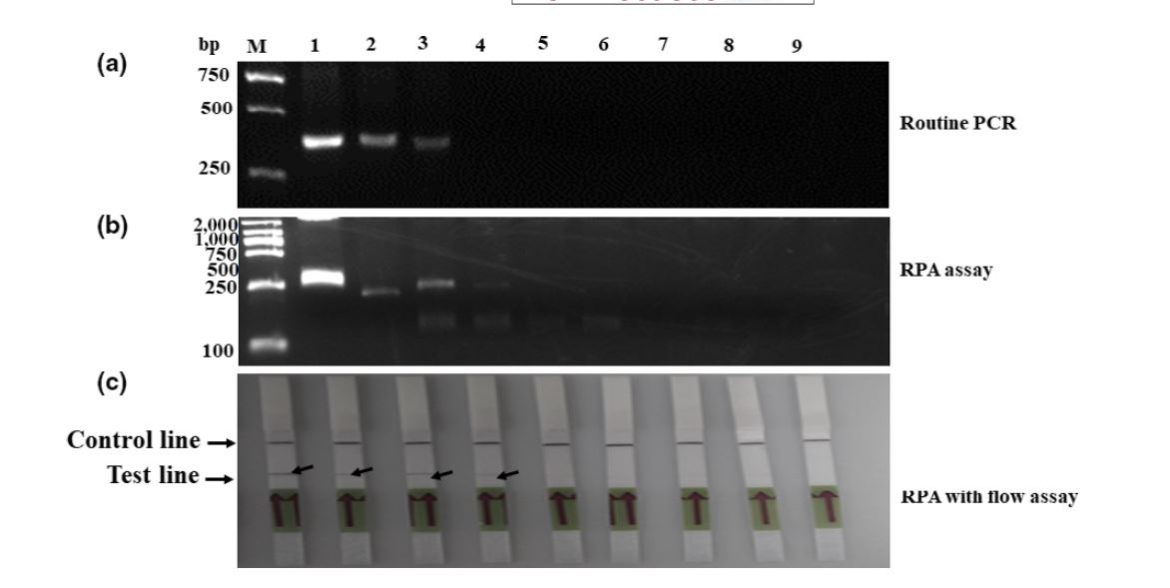
Cyprinid Herpes Virus 3 (CyHV-3) and Koi Herpes Virus (KHV)
A multiplex RPA combined with the Milenia HybriDetect 2T for the specific detection of CyHV-3 and KHV was invented by Soliman and El-Matbouli. This method can detect amounts of 10 fg DNA (30 copies virus genome) within one hour. It is much faster than the commonly used PCR (3 hours) and 10 to 100 fold more sensitive.
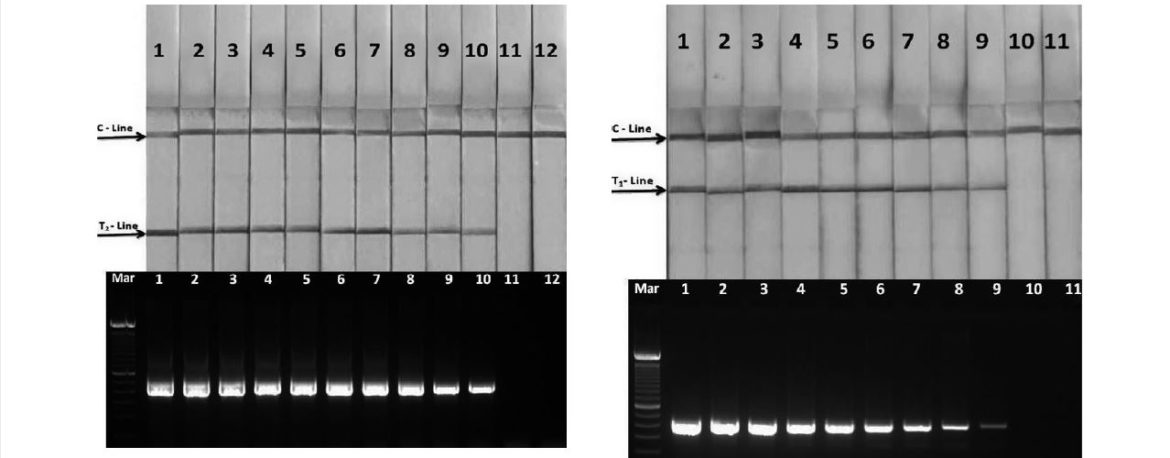
Spring Viremia of Carp Virus (SVCV)
SVCV is a cyprinid pathogenic virus, usually needs to be detected in a lab. Most virus outbreaks can be seen in fishery banks. The invented detection method (LAMP with Milenia HybriDetect) is suitable for field-detection in aquaculture and can detect up to 860 fg DNA. The authors claim, that a rapid and accurate diagnosis of the virus is vital to prevent the spread of the virus and to minimize economic losses. Many commonly used techniques are time consuming or show cross reactions with other viruses, therefore a simple but still accurate method like LAMP-LFA is needed.
Shrimp Taura Syndome Virus (TSV)
Kiatpathomchai et al also used a combination of LAMP with LFD to detect the Shrimp RNA Virus Taura Syndrome Virus. This virus has a big economic impact regarding shrimp farming. The method developed by the authors is very quick (total assay about 70 min.). The sensitivity is comparable to other commonly used methods for RT-PCR detection of TSV.
Detection of Pathogenic Viruses in Aquaculture – A Methodological Summary
- Equivalent or sometimes improved sensitivity compared to standard PCR methods
- Very good specificity, comparable to PCR-applications
- Robust analysis
- Rapid Test – much faster than standard PCR
- Allows point-of-care testing
- Field-applicable analysis
- Supports diagnostics under low-resource settings (equipment)

